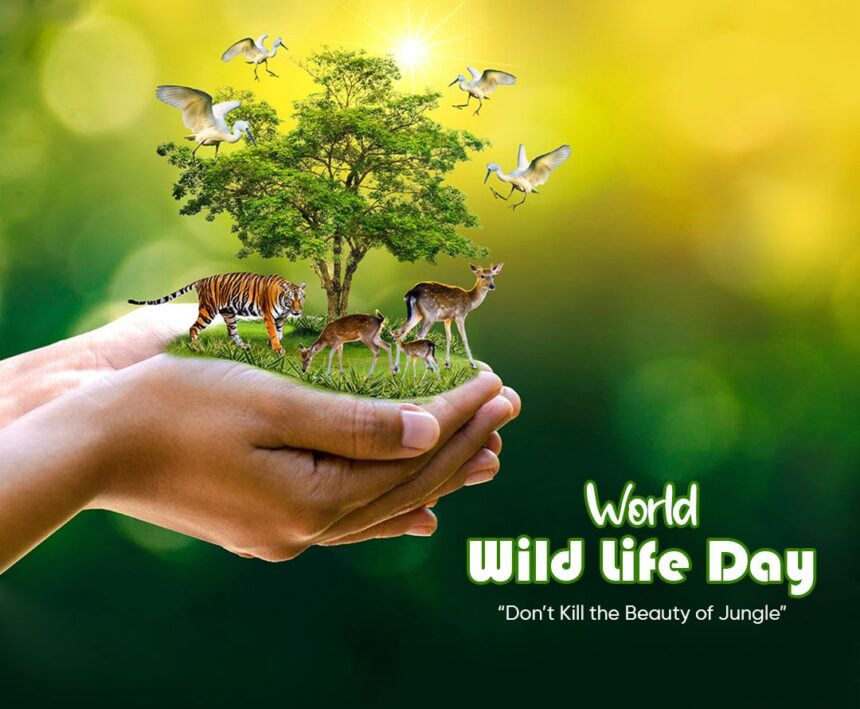🌿 World Wildlife Day: Celebrating Nature’s Silent Guardians
Every year on March 3, the world comes together to celebrate World Wildlife Day — a day dedicated to honoring our planet’s breathtaking biodiversity and the urgent need to protect it. From the majestic tigers in India, to the delicate corals of the Pacific, to the migratory birds soaring over continents, this day recognizes the role wild animals and plants play in sustaining the earth’s ecosystems and our human existence.
- 📜 History of World Wildlife Day
- 🗓️ Timeline of Major Events
- 📊 7 Unbelievable Facts About World Wildlife
- ❓ Frequently Asked Questions (FAQs)
- Q1: What is the theme of World Wildlife Day?
- Q2: Who organizes World Wildlife Day?
- Q3: Why is World Wildlife Day important for humans?
- Q4: How can I participate in World Wildlife Day?
- Q5: What role does technology play in wildlife protection?
- 🌟 Significance of World Wildlife Day
- 1. Education and Awareness
- 2. Empowering Global Conservation
- 3. Driving Policy and Action
- 4. Cultural and Spiritual Respect
- 5. Promoting Sustainable Living
- 🎉 Observance Around the World
- 💌 Wishing Messages for World Wildlife Day
- 💚 Importance in Our Lives
- ✅ Important Points to Remember
- 🧭 Conclusion: A Wild Future Is a Wise Future
World Wildlife Day is not just for scientists, environmentalists, or governments. It’s for you, for me, for every child who marvels at an elephant and every farmer who depends on pollinators. It’s about respecting life in all its forms — not just surviving alongside it, but thriving together.
📜 History of World Wildlife Day
🗓️ On December 20, 2013, the United Nations General Assembly proclaimed March 3 as World Wildlife Day.
The date commemorates the signing of the Convention on International Trade in Endangered Species of Wild Fauna and Flora (CITES) on March 3, 1973.
The resolution was a major step forward in global efforts to safeguard wildlife from illegal trade, exploitation, and extinction.
It was first celebrated in 2014, and since then, it has grown into a global environmental movement, engaging governments, communities, organizations, and individuals worldwide.
🗓️ Timeline of Major Events
| Year | Key Milestone |
|---|---|
| 1973 | CITES treaty signed to protect endangered species |
| 2013 | UN officially declares March 3 as World Wildlife Day |
| 2014 | First global celebration of World Wildlife Day |
| 2016 | Theme focused on “The Future of Wildlife is in Our Hands” |
| 2020 | Spotlight on sustaining all life on Earth |
| 2022 | Focused on recovering key species for ecosystem restoration |
| 2025 | Ongoing advocacy for marine biodiversity and climate justice |
📊 7 Unbelievable Facts About World Wildlife
🐘 1 million animal and plant species are currently threatened with extinction — many within decades.
🐝 Pollinators like bees and butterflies are responsible for 75% of food crops but face rapid decline.
🌊 Oceans absorb 25% of CO₂ from the atmosphere — marine wildlife helps balance this system.
🦏 The illegal wildlife trade is a $20 billion industry, ranking fourth after drugs, arms, and human trafficking.
🌳 Forests are home to 80% of terrestrial animals and plants — deforestation destroys their habitats.
🦅 Wildlife plays a direct role in our health by regulating diseases through balanced ecosystems.
🌍 Indigenous people protect 80% of global biodiversity, yet their rights are often overlooked.
❓ Frequently Asked Questions (FAQs)
Q1: What is the theme of World Wildlife Day?
Themes vary every year. Examples include:
2023: “Partnerships for Wildlife Conservation”
2022: “Recovering Key Species for Ecosystem Restoration”
Q2: Who organizes World Wildlife Day?
It is spearheaded by the UN, coordinated by the CITES Secretariat, and supported by governments, NGOs, and communities.
Q3: Why is World Wildlife Day important for humans?
Because our survival depends on biodiversity — for food, medicine, clean air, water, and climate balance.
Q4: How can I participate in World Wildlife Day?
Join events, raise awareness on social media, reduce plastic use, support eco-tourism, donate to conservation funds, or plant native trees.
Q5: What role does technology play in wildlife protection?
AI, drones, GPS tracking, and bioacoustics are now widely used for anti-poaching efforts, monitoring habitats, and rescuing endangered species.
🌟 Significance of World Wildlife Day
1. Education and Awareness
World Wildlife Day educates people about the intrinsic value of biodiversity. It encourages understanding of ecosystems, endangered species, and human impact.
2. Empowering Global Conservation
The day brings together voices from governments, indigenous communities, NGOs, and youth to promote long-term solutions.
3. Driving Policy and Action
Each year’s theme informs policy dialogues at UN forums, climate negotiations, and national legislation, impacting conservation strategies.
4. Cultural and Spiritual Respect
Many communities see wildlife as sacred. Preserving animals like elephants, tigers, or eagles also preserves identity, heritage, and spirituality.
5. Promoting Sustainable Living
From eating locally to reducing fossil fuels, it urges us to choose lifestyles that don’t harm biodiversity.
🎉 Observance Around the World
🌍 United Nations
Organizes high-level panels, policy sessions, and global livestreams. Often hosts youth challenges and art campaigns.
🏫 Schools and Colleges
Conduct wildlife-themed exhibitions, essay contests, clean-up drives, and awareness talks.
🐾 Zoos and Sanctuaries
Offer free entry, conduct wildlife safaris, run rescue demonstrations, and promote animal adoption programs.
🧑🌾 Rural Communities
In forest and mountain areas, communities conduct rituals, plant trees, and share folk stories of wildlife.
📱 Online Campaigns
Hashtags like #WorldWildlifeDay, #ProtectWildlife, and #BiodiversityMatters trend globally, boosting awareness.
💌 Wishing Messages for World Wildlife Day
🌿 “Let us stand together — not just for animals, but for the world we all share. Happy World Wildlife Day!”
🦁 “Protecting wildlife isn’t charity. It’s survival. Let’s do our part today and every day.”
🐾 “Every creature has a role. Every species deserves to thrive. Wishing you a wild and wonderful World Wildlife Day!”
🐢 “Slow down, look around, and listen to the earth. Nature is calling — and we must respond.”
💚 Importance in Our Lives
✅ Environmental Stability
Wildlife maintains balance in food chains and ecological cycles. Without predators, pests thrive. Without pollinators, food fails.
✅ Economic Benefits
Wildlife contributes to eco-tourism, agriculture, pharmaceuticals, and even climate resilience. Coral reefs, for example, protect coastlines from storms.
✅ Health Protection
Ecosystem destruction increases zoonotic diseases. Preserving wild habitats reduces the risk of future pandemics.
✅ Emotional and Mental Wellness
Time in nature reduces stress, anxiety, and depression. Wildlife inspires awe, curiosity, and a sense of belonging.
✅ Important Points to Remember
World Wildlife Day is not just about exotic animals — it includes insects, birds, plants, and marine life too.
Climate change is directly affecting wildlife migration, food availability, and breeding cycles.
Conservation isn’t only for remote forests — even urban gardens can be sanctuaries.
Every action counts: reduce meat consumption, use less plastic, support ethical brands, and educate others.
🧭 Conclusion: A Wild Future Is a Wise Future
World Wildlife Day is a reminder of one universal truth — we do not inherit the earth from our ancestors, we borrow it from our children. Wildlife is not separate from us. It is us. Our forests breathe for us, our rivers sustain us, and our creatures balance the delicate web of life we so casually depend on.
But with each extinct species, a piece of that web unravels. World Wildlife Day urges us to act now, not later. To teach the next generation that compassion is not only for humans but for every living being.
So this March 3rd — celebrate, learn, act, and advocate. For the forests, the oceans, the deserts, and the skies. For the tigers, the turtles, the bees, and the butterflies.
Because when wildlife wins, we all win.









АО «ГОРСВЕТ» в Чебоксарах https://gorsvet21.ru профессиональное обслуживание объектов наружного освещения. Выполняем ремонт и модернизацию светотехнического оборудования, обеспечивая комфорт и безопасность горожан.